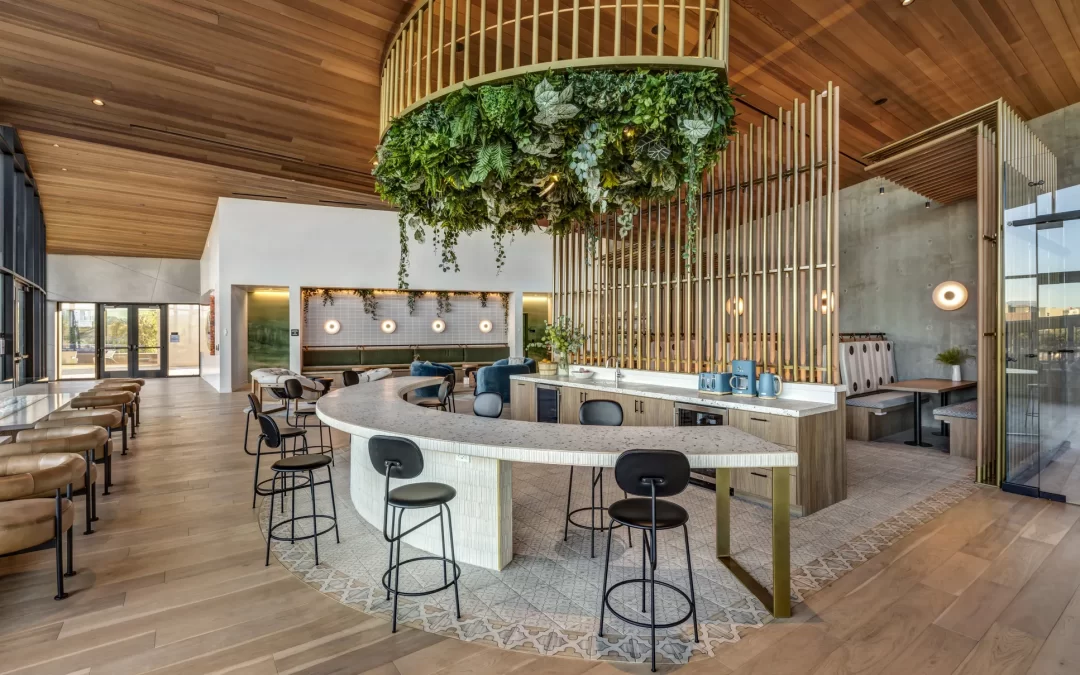Interior design is more than just arranging furniture or picking out decor—it’s about crafting spaces that tell a story, evoke emotions, and serve a purpose. One of the most powerful tools in a designer’s toolkit is zoning through color and texture. This technique allows designers to divide a space into functional areas while maintaining visual harmony. Whether you’re designing a cozy living room, a productive workspace, or a welcoming retail environment, zoning through color and texture can help you achieve both aesthetic and practical goals.
What is Zoning Through Color and Texture?
Zoning through color and texture is the process of using different hues, patterns, and tactile elements to define distinct areas within a space. This technique helps create a sense of order, guides movement, and enhances the overall experience of a room. For example, a bold color might mark a cozy reading nook, while a textured rug could delineate a dining area within an open-plan living space.
This approach is especially useful in modern layouts where open-plan designs dominate. Without physical walls, color and texture become essential tools for creating boundaries and ensuring each area feels intentional and cohesive.
Why is Zoning Through Color and Texture Important?
- Functional Clarity: Zoning helps define the purpose of each area, making spaces more intuitive and user-friendly.
- Visual Appeal: Thoughtful use of color and texture adds depth, interest, and personality to a room.
- Emotional Impact: Colors and textures can evoke specific emotions, influencing how people feel in a space.
- Space Optimization: Zoning maximizes the utility of a room, especially in smaller or multifunctional spaces.
Principles of Zoning Through Color and Texture
- Color Psychology: Different colors evoke different emotions. Warm tones like red and orange create energy, while cool tones like blue and green promote calmness.
- Texture Contrast: Combining smooth and rough textures adds visual and tactile interest, making a space more dynamic.
- Balance: Striking the right balance between bold and neutral elements ensures harmony without overwhelming the senses.
- Flow: Consistency in color palettes and textures creates a seamless transition between zones, maintaining unity.
Examples of Zoning Through Color and Texture
- Open-Plan Living Spaces: Use a bold accent wall to define the living area, while a textured area rug anchors the dining space.
- Home Offices: A neutral color scheme with pops of energizing colors like yellow can create a focused yet inspiring workspace.
- Retail Environments: Different textures on display shelves or flooring can guide customers through product zones, enhancing the shopping experience.
Benefits of Zoning Through Color and Texture
- Enhanced Functionality: Clearly defined zones make spaces more efficient and user-friendly.
- Aesthetic Appeal: Thoughtful design choices elevate the visual impact of a room.
- Emotional Connection: Colors and textures can evoke specific moods, making spaces more memorable.
- Flexibility: Zoning allows for easy reconfiguration of spaces as needs evolve.
Tips for Zoning Through Color and Texture
- Start with a Plan: Identify the primary functions of the space and determine how to divide it logically.
- Use Accent Colors Sparingly: Bold colors should be used strategically to avoid overwhelming the space.
- Layer Textures: Combine different textures to add depth and interest without cluttering the design.
- Consider Lighting: Lighting can enhance or mute the impact of colors and textures, so plan accordingly.
- Test in Small Doses: Experiment with color swatches and fabric samples before committing to a design.
Infographic Table: Key Elements of Zoning Through Color and Texture
| Element | Purpose | Example |
|---|---|---|
| Accent Walls | Define zones visually | Bold red wall in a living room |
| Area Rugs | Anchor specific areas | Textured rug under a dining table |
| Color Palettes | Create mood and cohesion | Neutral tones with pops of yellow |
| Texture Combinations | Add depth and tactile interest | Smooth leather with woven cushions |
| Lighting Effects | Highlight colors and textures | Warm lights to enhance wood textures |
Subtopics to Explore
- Color Psychology in Interior Design: Understanding how colors influence emotions and behavior.
- Texture in Design: Exploring the role of tactile elements in creating dynamic spaces.
- Open-Plan Design Challenges: Practical solutions for zoning in open layouts.
- Sustainability in Zoning: Eco-friendly materials and practices for conscious design.
Conclusion
Zoning through color and texture is a powerful technique that can transform any space into a functional, visually stunning environment. By understanding the principles and applying them thoughtfully, you can create spaces that not only look good but also feel good. Whether you’re designing a home, office, or retail environment, this approach allows you to tell a unique story and craft memorable experiences.



